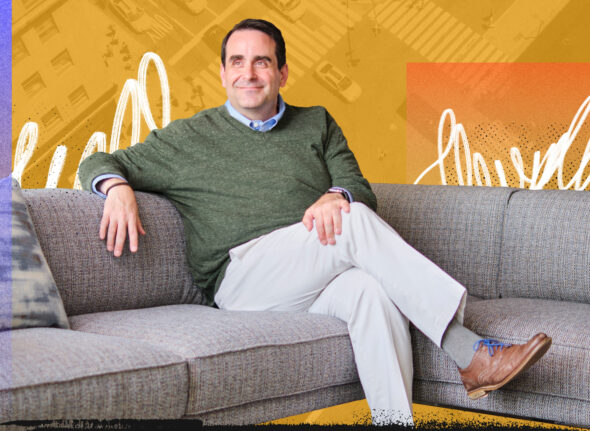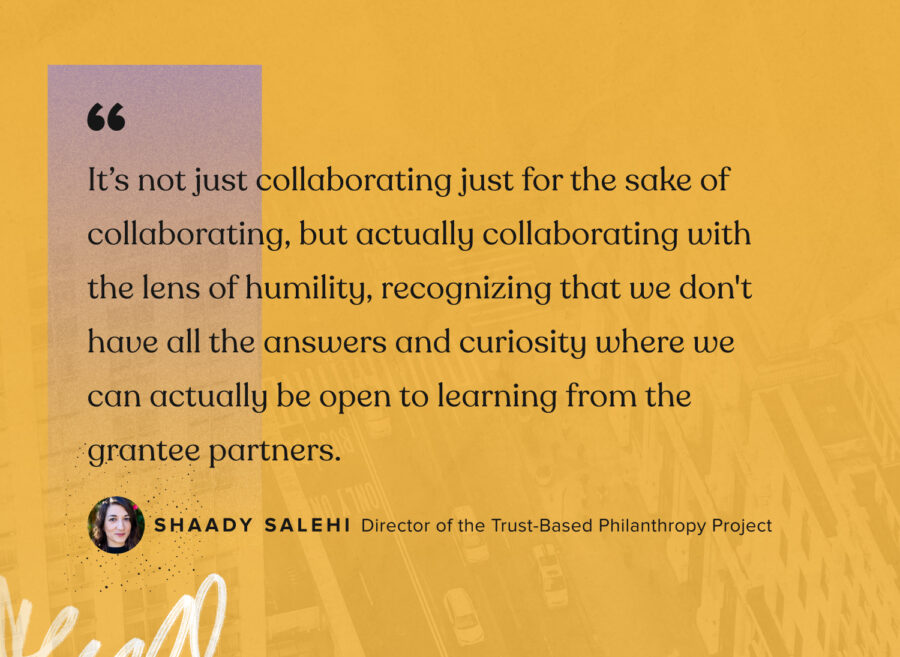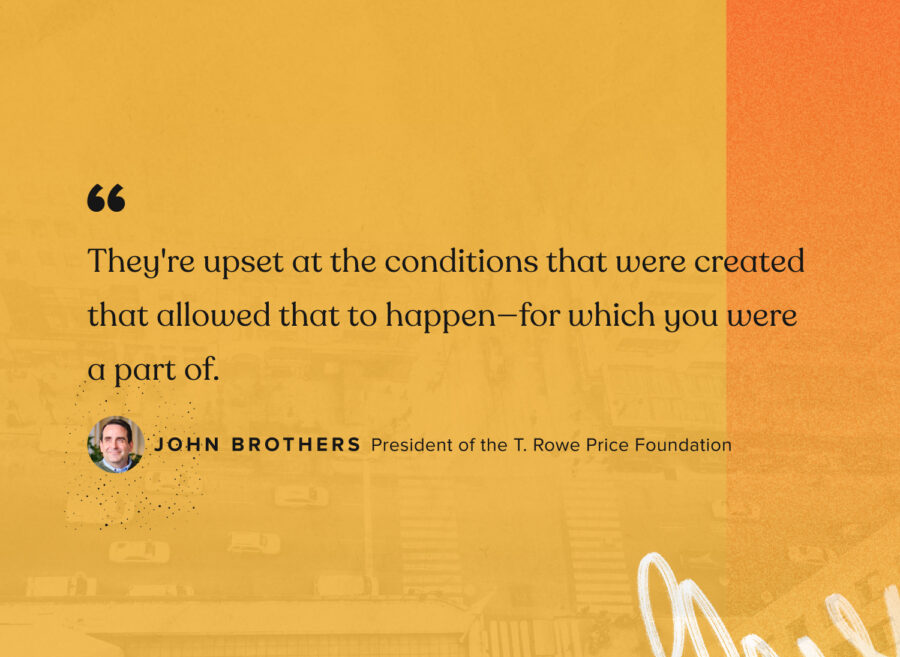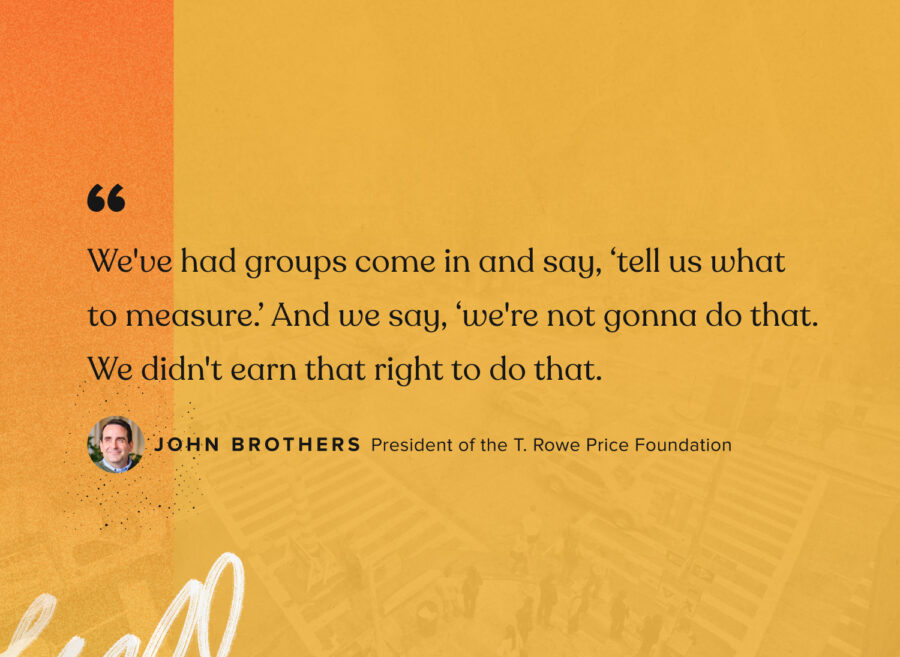By nature, corporate social responsibility professionals face big, complex challenges. Their work is to channel corporate resources to solve society’s most pressing problems. And often they have to do so with limited budgets. They don’t have the time and resources to retread ground that’s already been covered.
That’s why the most successful CSR professionals are the ones who can look out into the world and absorb the lessons other sectors have already learned—and then adapt those lessons to their work.
In this regard, trust-based philanthropy is a test for CSR professionals. Essentially, private funders and nonprofits have learned important lessons about what’s at the heart of effective philanthropy. And the corporate sector needs to listen in. Because trust-based philanthropy is no longer an option, it’s becoming an essential pillar of corporate social impact.
Trust-based philanthropy is rooted in relationships
Trust-based philanthropy is a movement to make trust a core tenet of the relationship between funders and communities. It’s a course correction to the traditional mechanics of philanthropy, which have created startling power imbalances. Through trust-based philanthropy, funders put the decision-making power in the hands of their grantees, and follow their lead.
In a recent interview, Pia Infante, co-executive director of the Whitman Institute and senior fellow of the Trust-Based Philanthropy Project describes how origins of the trust-based ethos started in 2009. She explains that, for nonprofits and community members, traditional philanthropy “creates an anxious power dynamic of ‘dancing for your supper.’”
As with most grassroots movements, the shift toward trust-based philanthropy can’t be traced to one specific moment in time. It’s more a collection of efforts that have coalesced around a set of ideals. In describing the process of choosing the name “trust-based”, Infante explains that it was grantees who actually called out trust. “The truth is, if it had been just up to us, we probably would have called it ‘relationship-based philanthropy’—but we took the cue from our partners and ran with it,’” she says.
Though trust-based practices have been percolating through the nonprofit and private foundation sector for a number of years, they’re now making their way into the world of corporate philanthropy.
T. Rowe Price is a prime example. John Brothers, president of the T. Rowe Price Foundation has helped to pioneer a program focused on trust-based social good. “For us, what trust-based means is when we have the good fortune of being able to step into a local community, we recognize we are walking into somebody’s home. And we hold that ground sacred,” he says.

Brothers’ understanding of the sanctity and fragility of what it means to step into a community has helped him to redefine the philosophy behind corporate social responsibility. With his work, he proves that trust-based practices have the potential to transform CSR.
Trust-based practices open the door to new opportunities
The thing about adopting trust-based practices is that there is no simple checklist. Instead, using a trust-based approach requires you to interrogate every aspect of how and why your organization gives–and then reorienting to prioritize relationships.
This process in itself has the potential to shift your CSR programs from a piecemeal effort to a thoughtful, coordinated, and long-term campaign for social good. Over time, it can transform your CSR programs into a pillar of your brand identity.
Create effective solutions
No one knows better what communities need than community members themselves. That’s why trust-based practices often lead to more effective solutions. When donors try to guess what communities want, they often miss the mark.
John Brothers has seen this first-hand: “There’s a playground in West Baltimore that 15 companies came and built because somebody said, ‘hey, let’s go build a playground that should be a solution to unrest.’ And that playground has sat there unused for eight years. No community members ever asked for that.”
When community members help direct funding, CSR professionals have a much better chance of creating programs that actually work. Funds go where they’re most needed. Plus, community members can help create programs that address the complexity and nuance of the ways social issues impact real people’s lives.
Get community buy-in
Community buy-in is a huge piece of the CSR puzzle. If community members feel like CSR programs ignore their identities and overlook their unique perspectives, it’s going to be difficult to get them on board—no matter what.
Letting the community shape program priorities and design turns them into natural advocates. They’ll want your CSR initiatives to work just as much as you do.
Shaady Salehi, director of the Trust-Based Philanthropy Project, explains what effective collaboration looks like:
“It’s not just collaborating just for the sake of collaborating, but actually collaborating with the lens of humility, recognizing that we don’t have all the answers and curiosity where we can actually be open to learning from the grantee partners.”

Build authentic relationships
In the end, effective CSR hinges on strong relationships. And they cannot be relationships of convenience.
You have to show up consistently, ready to listen and take ownership for the ways you’ve been complicit in perpetuating injustice.
Brothers talks about the knee-jerk reaction many companies felt after the social unrest in Minneapolis:
“20 companies in Minneapolis after the murder of George Floyd approached us and said, ‘Hey, look what’s happening in Minneapolis, like, we wanna have better relationships in our community.’ And what I said is the folks are not only upset that they lost George, who was their friend, their brother, their neighbor. They’re also upset at the conditions that were created that allowed that to happen—for which you were a part of.”

Authentic relationships require you to explore some difficult truths about the ways your company has or hasn’t shown up in the past. And it’s not a one-time thing. You have to stay open to feedback about how the company’s choices—in business and CSR—impact community members.
The main challenge: Letting go of “business as usual”
Incorporating trust-based practices requires you to reimagine your role as a funder.
You have to get accustomed to some discomfort as you shed old processes and craft new ones. And you’ve got to be mindful not to impose corporate frameworks where they don’t make sense.
Grantees are not employees (or customers)
Relationships with grantee partners don’t necessarily mimic other business partnerships. To build trust, companies have to let go of the notion that it’s their role to track and measure grantee performance.
Brothers equates it to stepping into someone’s home. “If I walked into your home, and said, hey step on the scale and you should weigh what I think you should weigh,’ you’d tell me to get the heck out of your house—as you should.”
Grantees should not have to prove their worth to their corporate partners. Instead, companies should let communities decide what success looks like and then support their journey to get there.
Social impact doesn’t happen on quarterly schedule
CSR isn’t like your other business initiatives. Its success cannot always be measured on a quarterly cadence. To get it right, you have to understand where your efforts fit into a long arc of social progress.
Rather than imposing arbitrary timelines upon your programs, shape your timelines around what’s important to community members. Perhaps they feel urgency around some programs. Or they might know that certain efforts will take time to have an impact. Let them guide you on this front.
Self-determination might feel new
As much as funders have gotten into some bad habits, grantees have absorbed them too. It might take a concerted effort to help grantees get used to leading funders rather than following directives.
Brothers says that this has been part of T. Rowe Price’s journey. Grantees were so used to funders making decisions, they sometimes craved that direction when it came to impact measurement.
“We’ve had groups come in and say, ‘tell us what to measure.’ And we say, ‘we’re not gonna do that. We didn’t earn that right to do that. And as you sit before us, you represent thousands of community members that have put trust in you, and you’re just gonna give that to me? That doesn’t make sense. Let’s work on this together, honoring the position that you’re in and the position that I’m in. And let’s work together to figure that out.’”

Aim to be a support system as your grantees learn how to identify what matters for themselves. Without that support and guidance, some organizations might never break out of their funder-focused mindframe.
How to start your trust-based journey
It’s easy to agree with the ethos of trust-based social philanthropy in theory, but the big question is how you start to fold those ideas into your work.
1. Start with your bedside manner
The how of your philanthropy is just as important as the how much. “My advice to CSR and philanthropy professionals that are wanting to do this work well is start with your bedside manner and the how of your work,” Brothers says. “The very nature of the work after that is going to be that much better because you really spend time on how that work interacts with the community and its residents.”
Approach your programs from the community’s perspective. Think about the ways you can prioritize relationships and honor individual experiences. As you work to establish or strengthen partnerships with community organizations, be sure you’re listening more than talking.
2. Break out of the savior dynamic
Rather than asking community members what’s wrong in their communities, start with what’s working well. See if you can build programs around community strengths rather than focusing solely on their needs.
In traditional philanthropy, there’s a tendency for funders to focus only on what communities lack. But this framing asks people to reduce themselves to their needs. “Communities don’t recognize themselves as needs,” Brothers says. “They recognize themselves much differently. The only way needs come in is by outsiders coming in and constantly talking to them about what’s wrong with them.”
Retool your funding application to reflect this shift. If your application asks people to list all their hardships and failures without once asking about their successes, you’re setting the relationship up for failure. “I don’t know any service in the world that you can build off by asking somebody by building off of a glass, half empty,” Brothers says. Be sure to give applicants a chance to share their strengths, passions, and ideas alongside their needs.
3. Let go of arbitrary standards
Philanthropy is often held to an incredibly high bar when it comes to transparency and accountability. The trouble is, sometimes those high expectations result in arbitrary standards. Funders make grantees jump through hoops or impose unnecessary oversight in the name of “impact.”
For Brothers, breaking out of this dynamic required him to frame the investment in social good in a way his corporate leaders could understand.
When they wanted to support specific projects rather than giving resources to an organization to spend how they wish, he explained that giving to a community organization was like investing in a brand. You wouldn’t invest in Diet Coke, the product—you’d invest in Coca Cola, the company, he reminded them. And you wouldn’t be in it for the short term, you’d want to focus on long-term return.
Using this logic, he helped convince his leadership to take a long-term, trust-based approach to community investment.
Be a champion of trust-based social good
Championing trust-based practices as a CSR professional will make your community programs stronger and more resilient. Plus, you’ll have a hand in helping to reshape the whole philanthropic landscape to be more equitable and empathetic. The first step is finding a CSR software that helps you bring a trust-based philosophy into your day-to-day work.
Ready to shape the future of CSR?
Sit down with five social impact leaders at Impact Studio.